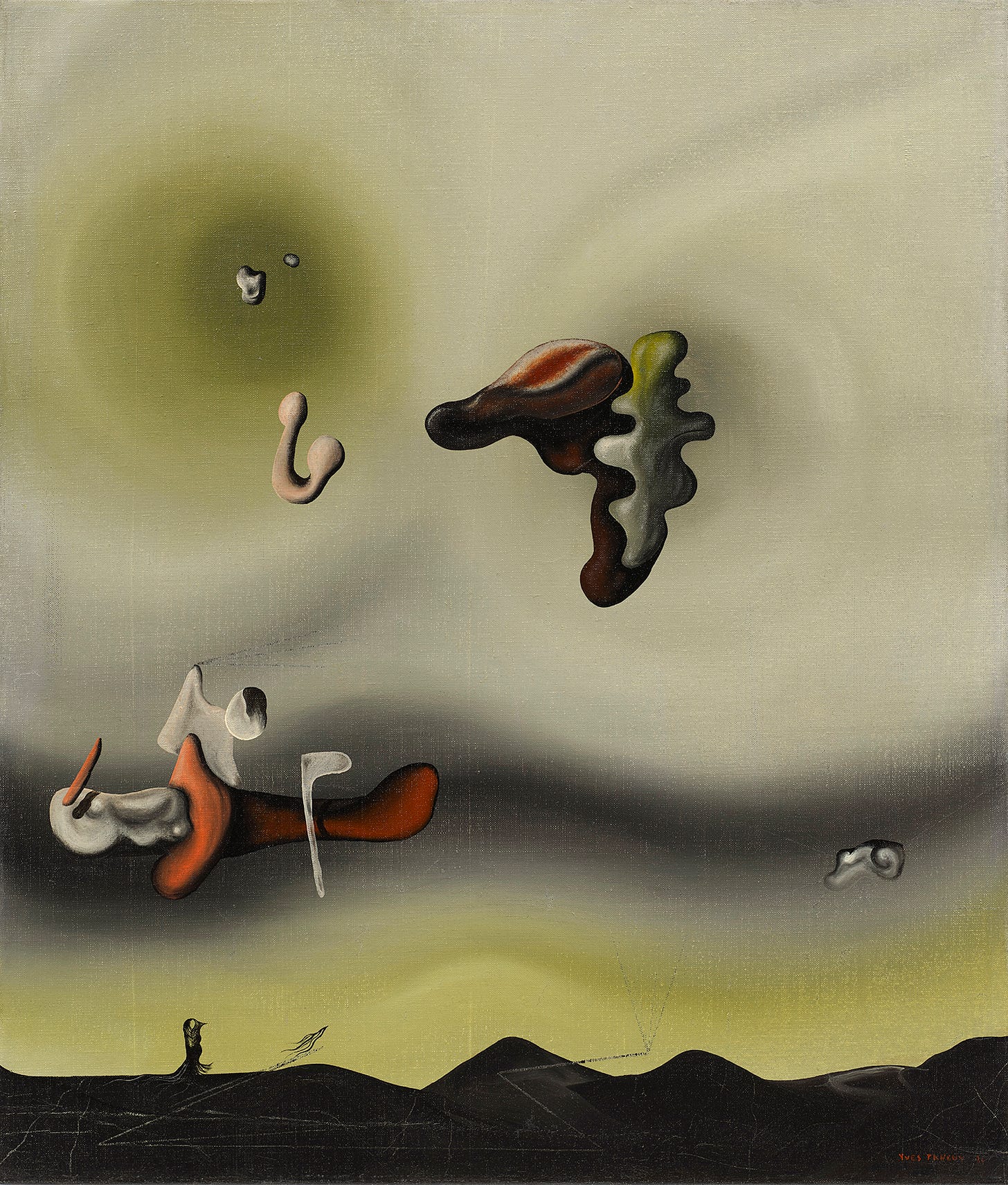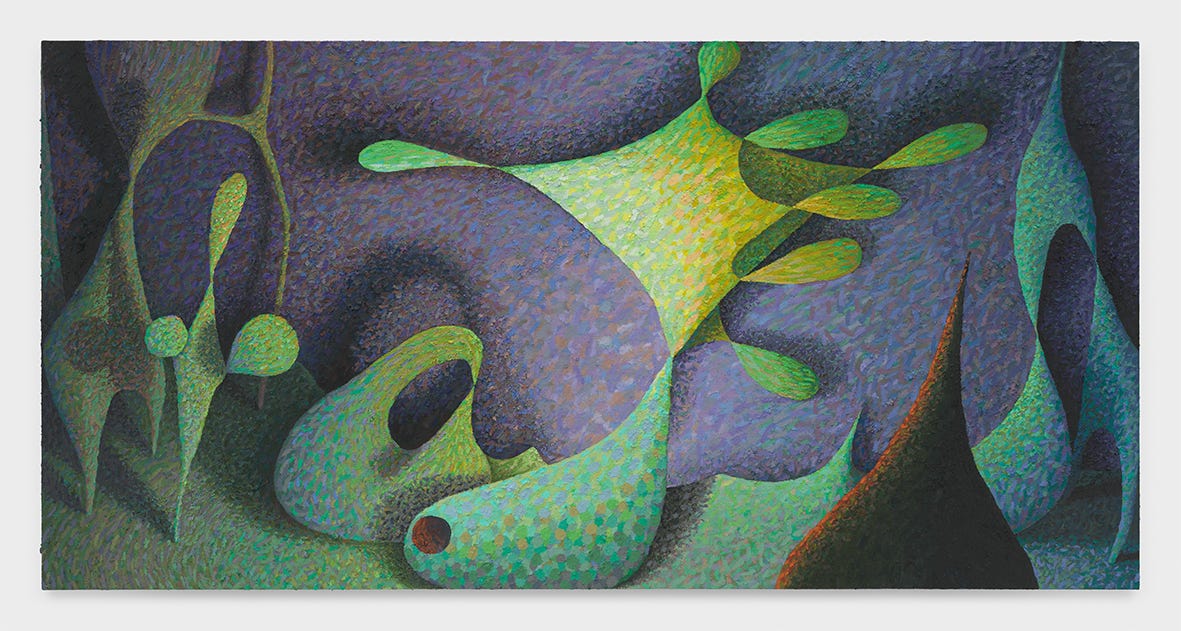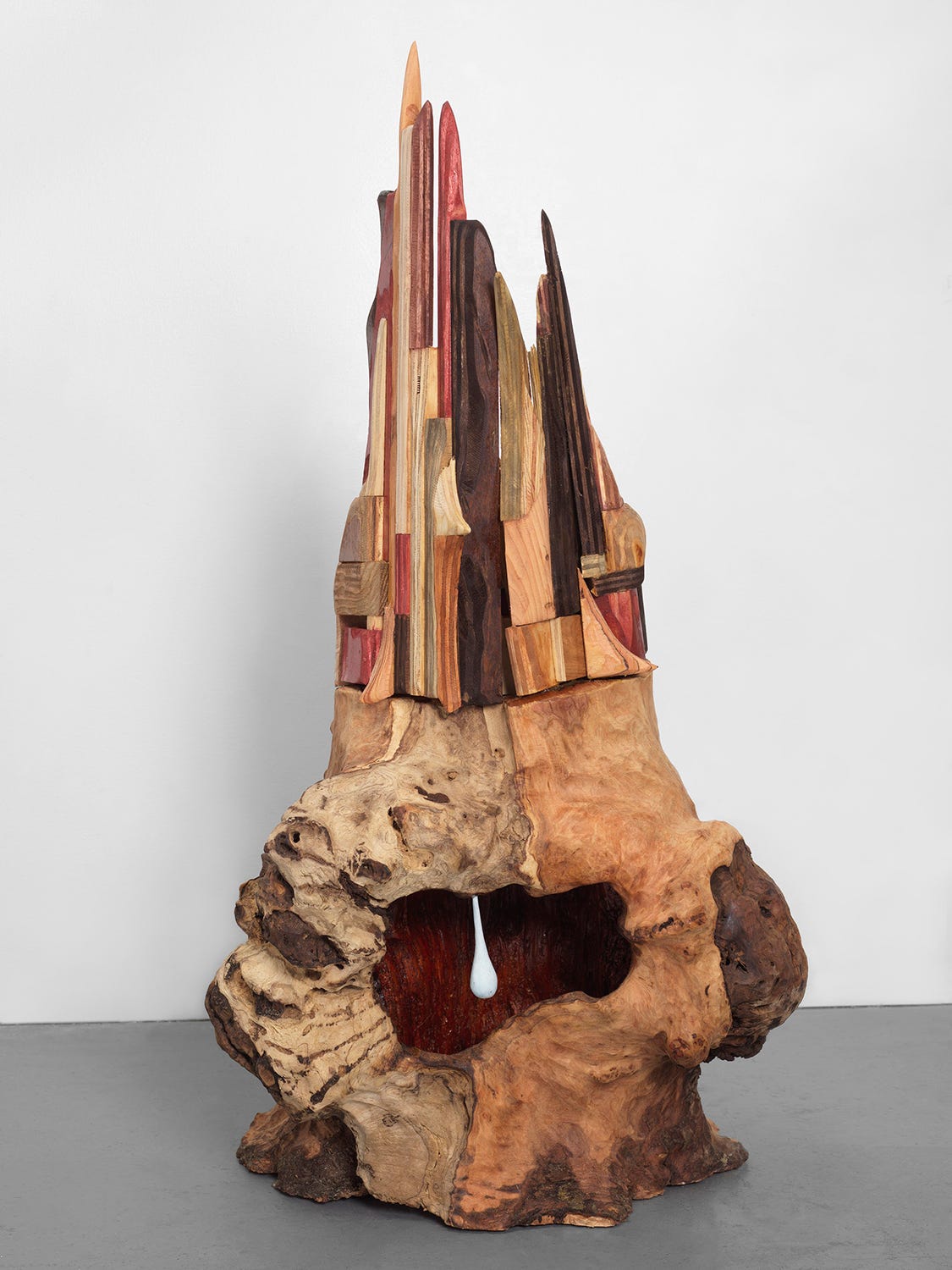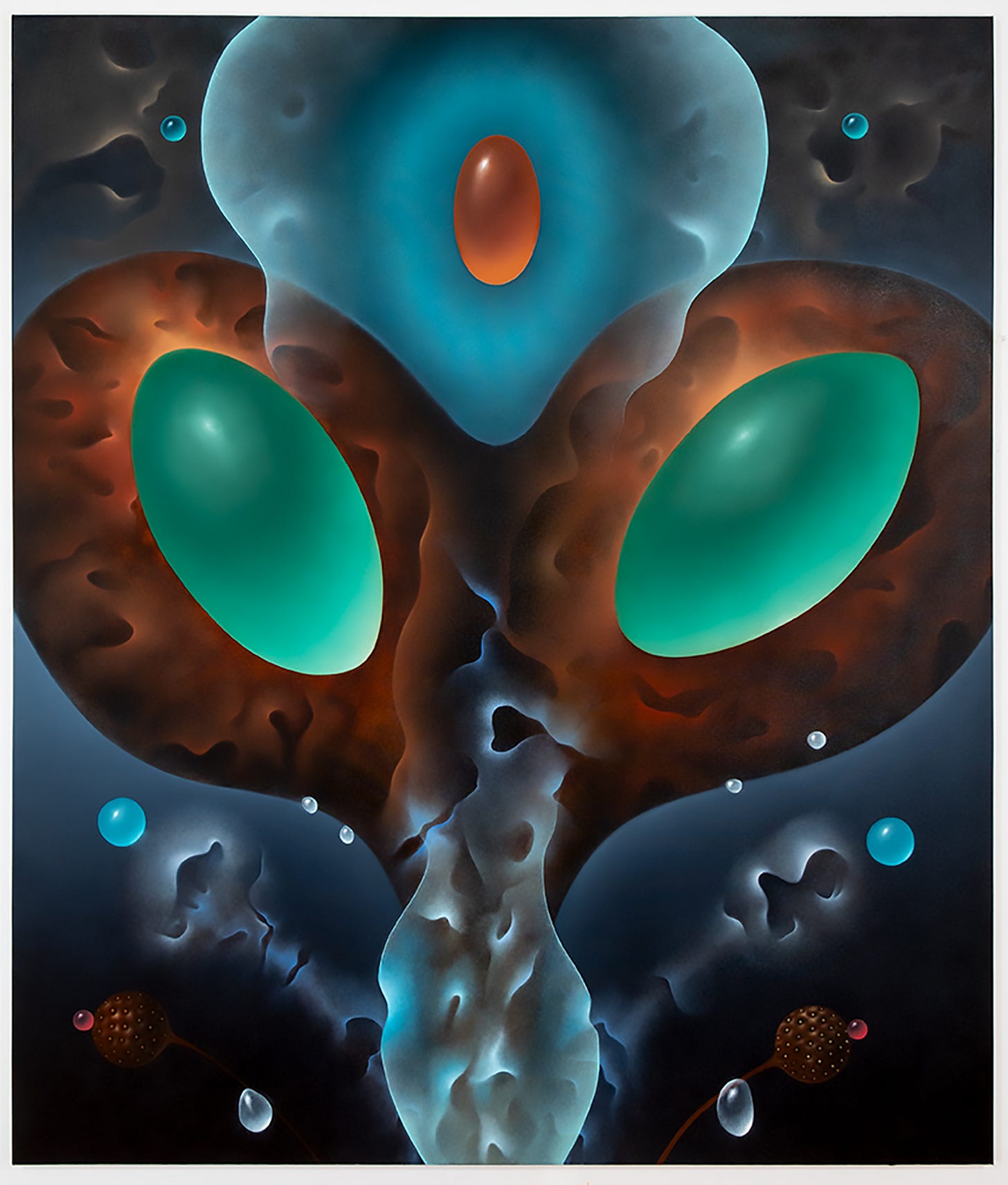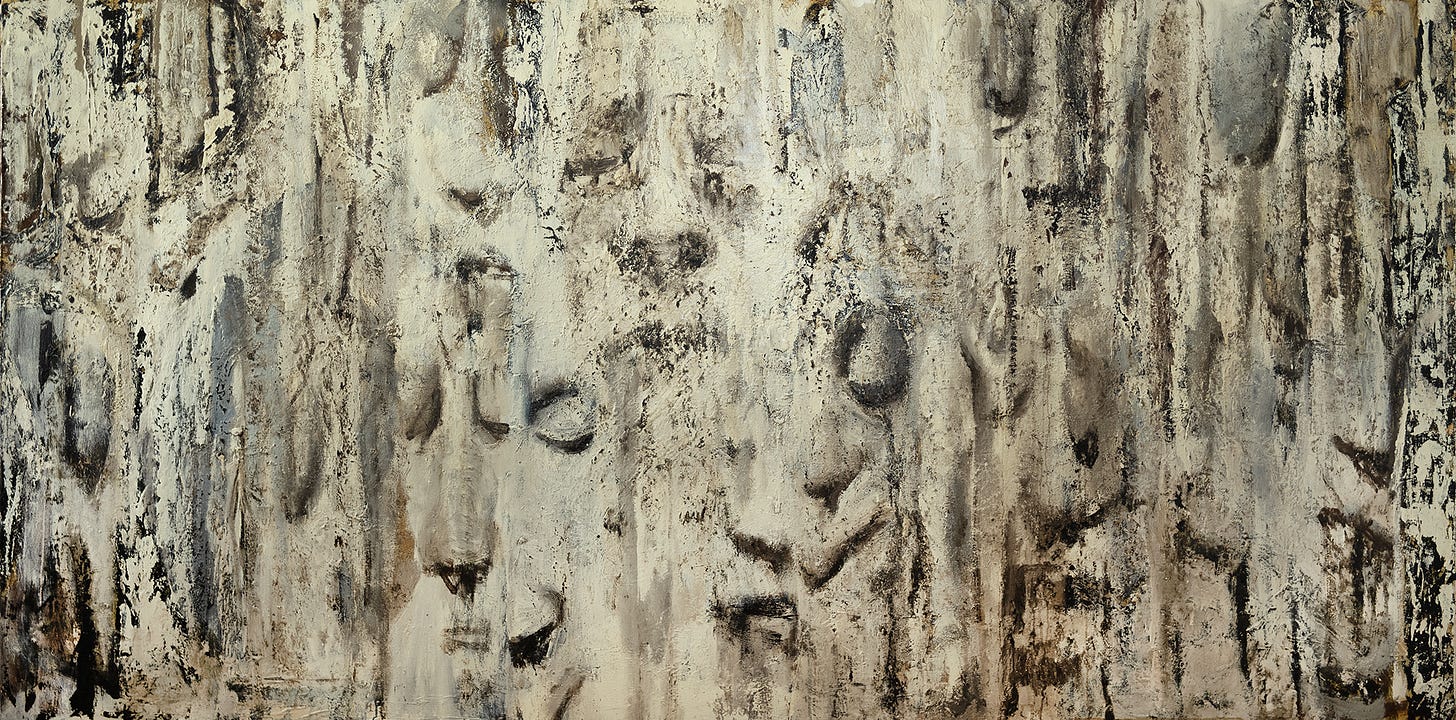A Mysterious Vision: Non-Objective, Abstract Visionary Art
An essay highlighting the importance of abstraction in the Surrealist movement and as an aspect of the exhibition "A Mysterious Vision" that I have curated for Robilant +Voena Gallery
Yves Tanguy Untitled 1931, Oil on canvas, 55 x 41 cm (21 5⁄8 x 16 1⁄8 in.), Private Collection
When most people think of Surrealism, the first image to come to mind is Salvador Dali’s melting clocks in Persistence of Memory, or Rene Magritte’s playful pun on a pipe in The Treachery of Images. But Surrealism had an alternate, parallel stream of abstract art that did not get as much public attention but which has had an enormous influence in the art world.
While the Illusionist Surrealists—de Chirico, Dali, Magritte and others—dominated the public’s conception of the movement, there was another branch—the Non Objective Surrealists—who were purely abstract artists: Roberto Matta, Gordon Onslow Ford, André Mason, and others.
Most of these abstract artists had a more orthodox take on Surrealism and maintained that one could not truly practice Automatism—the device by which the Surrealists bypassed the rationaland accessed the unconscious—if one practiced layered, indirect Illusionism, which they regarded as being too rooted in the rational. The abstract Surrealists directly inspired the New York School and Abstract Expressionism. There were other Surrealists, like Yves Tanguy, who practiced what later became known as Figurative Abstraction, which mingled elements of both illusionism and abstraction. There are a long line of descendants from that stream as well, including William de Kooning, Arshile Gorky and others, as well as some of the contemporary artists in this exhibit. To the degree that Automatism lives on in the contemporary art world, one could argue that it does so mainly through Non Objective art.
By 1925, Tanguy (whose painting above is featured in A Mysterious Vision) had developed a signature style of dream landscapes that remained very consistent throughout his life. Like other Surrealists, Tanguy was preoccupied with dreams and the subconscious. But what set him apart was the creation of abstract landscapes with naturalistic precision. He depicted the subconscious as a place, having both depth and form, in settings that were illusionistic and alternately alien or familiar. He uses perspective in a manner similar to de Chirico, in that objects recede into the distance, cast long shadows, and hold our attention.
Alicia Adamerovich, Inflated 2025, Oil on linen, 91.4 x 182.9 cm (36 x 72 in.)
In the exhibition I’ve curated for Robilant+Voena, A Mysterious Vision , I devoted one of the four rooms of the gallery to Non Objective Art. These contemporary artists are neither Surrealists or of the New York School/Abstract Expressionists—both movements are long dead— but they are certainly influenced by them (and many other movements/sub-movements) and practice variations on all of them.
Alicia Adamerovich’s modality of abstraction is normally labelled biomorphic, but not purely so, as she often mixes in many of the Platonic solids of cones, pyramids, spheres, cubes and rectangles. This is even more true of her sculpture, which is often sourced from fallen trees sourced from her parents’ land in rural Pennsylvania, to which she often adds more purely geometric accompaniments.
Alicia Adamerovich, Nimrod 2024, Stump, recycled wood and resin, 106.7 x 55.9 x 50.8 cm (42 x 22 x 20 in.)
Kristy Luck engages in a subtle gamesmanship that I find very interesting, with transparent and opaque glazing. Luck never loses the weave of the canvas, the substrate fabric; the multiple thin layers over a ground color that creates a haze-like atmospheric effect with some depth. Their work is so subtle and ephemeral that it feels an injustice to assign words, as if that might limit the work somehow.
Kristy Luck Untitled, 2024, Oil on linen, 22.8 x 33 cm (9 x 13 in.)
In his more recent work, Alessandro Keegan has moved away from the pristine crystalline landscape of glass orbs and precious stones of his previous work and included more organic and cloud-like substances to the mix. This move from etheric, weightless qualities, to more earthly, visceral, heavier qualities signals a change in philosophy for the artist. It is a direction I find fascinating, evocative of the art direction found in Omni magazine, circa late 70’s early 80’s, if you are old enough to remember that publication. (I certainly am.)
Alessandro Keegan, Through Primal Eyes, 2024, Oil on canvas, 177.8 x 152.4 cm (70 x 60 in.)
For Vincent Desiderio— who is more often thought of as a figurative painter—the abstract portion of his work relies heavily on Automatism, a Surrealist concept I referenced earlier. The painting Study for Dead White started as an array of anamorphic death masks that eventually disintegrated into an all-over rhythm, similar to the Abstract Expressionist work of Jackson Pollock but with some elements of figuration, as were often found in Willem de Kooning’s work.
Vincent Desiderio, Study for Dead White, 2019, Oil on linen, 121.9 x 243.8 cm (48 x 96 in.)
A Mysterious Vision: The Uncanny and Lingering Influences of Surrealism in Contemporary Art
Showing at two of Robilant + Voena’s locations:
New York: 7 May – 17 June 2025
19 East 66th Street, 4th and 5th Floors
New York, NY 10065
Opening May 6- 6-8pm
Milan: 16 September– 16 November, 2025
Via della Spiga, 1 20121,
Milan, Italy
Download the press release for A Mysterious Vision for the exhibit here.
Learn more about my upcoming writing, curatorial and artistic projects on my website.


